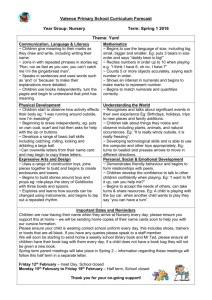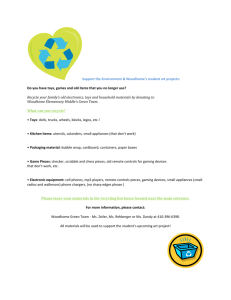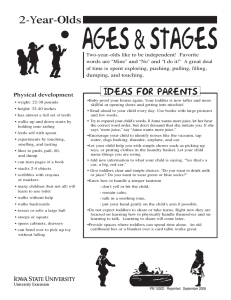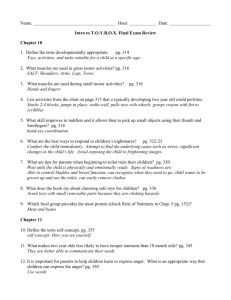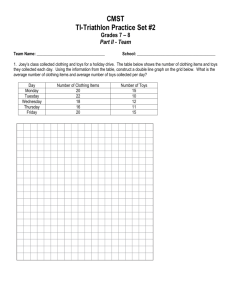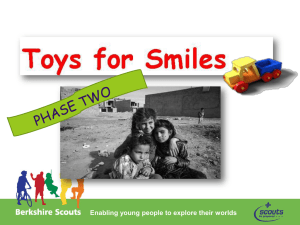Learning through play (docx
advertisement
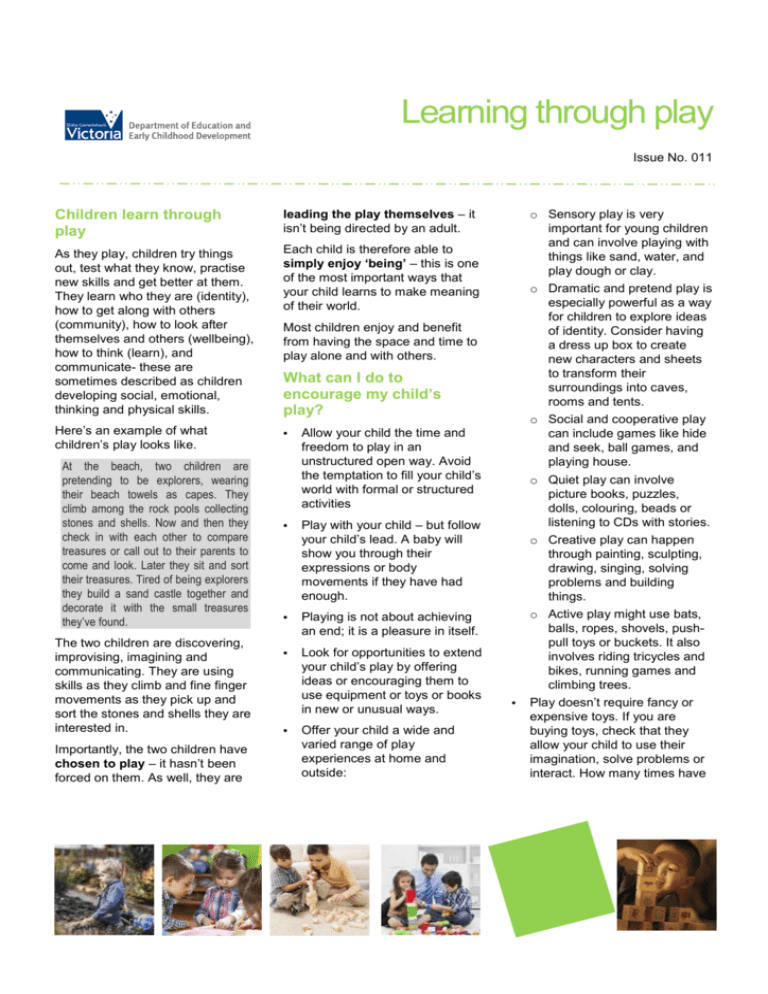
Learning through play Issue No. 011 Children learn through play leading the play themselves – it isn’t being directed by an adult. As they play, children try things out, test what they know, practise new skills and get better at them. They learn who they are (identity), how to get along with others (community), how to look after themselves and others (wellbeing), how to think (learn), and communicate- these are sometimes described as children developing social, emotional, thinking and physical skills. Each child is therefore able to simply enjoy ‘being’ – this is one of the most important ways that your child learns to make meaning of their world. Here’s an example of what children’s play looks like. At the beach, two children are pretending to be explorers, wearing their beach towels as capes. They climb among the rock pools collecting stones and shells. Now and then they check in with each other to compare treasures or call out to their parents to come and look. Later they sit and sort their treasures. Tired of being explorers they build a sand castle together and decorate it with the small treasures they’ve found. The two children are discovering, improvising, imagining and communicating. They are using skills as they climb and fine finger movements as they pick up and sort the stones and shells they are interested in. Importantly, the two children have chosen to play – it hasn’t been forced on them. As well, they are o Sensory play is very important for young children and can involve playing with things like sand, water, and play dough or clay. o Dramatic and pretend play is especially powerful as a way for children to explore ideas of identity. Consider having a dress up box to create new characters and sheets to transform their surroundings into caves, rooms and tents. Most children enjoy and benefit from having the space and time to play alone and with others. What can I do to encourage my child’s play? o Quiet play can involve picture books, puzzles, dolls, colouring, beads or listening to CDs with stories. Play with your child – but follow your child’s lead. A baby will show you through their expressions or body movements if they have had enough. Playing is not about achieving an end; it is a pleasure in itself. Look for opportunities to extend your child’s play by offering ideas or encouraging them to use equipment or toys or books in new or unusual ways. o Social and cooperative play can include games like hide and seek, ball games, and playing house. Allow your child the time and freedom to play in an unstructured open way. Avoid the temptation to fill your child’s world with formal or structured activities Offer your child a wide and varied range of play experiences at home and outside: o Creative play can happen through painting, sculpting, drawing, singing, solving problems and building things. o Active play might use bats, balls, ropes, shovels, pushpull toys or buckets. It also involves riding tricycles and bikes, running games and climbing trees. Play doesn’t require fancy or expensive toys. If you are buying toys, check that they allow your child to use their imagination, solve problems or interact. How many times have you seen a very young child more interested in the wrapping paper and box than the actual toy? Check with your local council if there are any local toy libraries that loan out quality toys and equipment. All children need to play, but not all children find play easy. Ask your educator or maternal and child health nurse for ideas. Related links You may also like to read You may also like to read other titles in this series: Your child’s most important teacher Encouraging your child’s strengths and interests Having conversations with your child Helping your child to be an active and involved learner. Other related newsletters can be found at www.education.vic.gov.au The Raising Children Network has many information sheets on play. They cover play ideas for babies, toddlers and pre-schoolers; choosing toys; what to do if particular toys or play make you uncomfortable and play for children with autism spectrum disorder. See: Encouraging toddlers’ creative and artistic development Imagining and creating: preschoolers See also Kid’s Matter’s: Children learn through play Learning through play page 2

